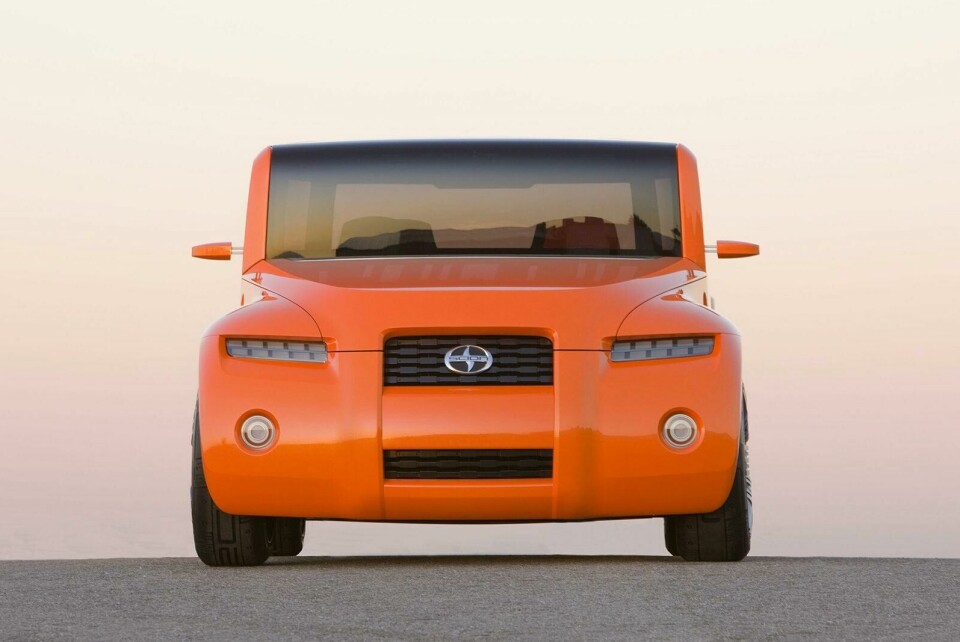
Concept Car of the Week: Scion Hako (2008)
With news of the brand’s closure, Car Design News revisits Scion’s best concept car, the Hako
This week, Toyota announced that it is to wind up its Scion sub-brand – a sad but predictable ending for a marque that had been adrift for a while now. However, things used to be different. When the xB, was launched 13 years ago it was heralded as a sort of anti-car, a rolling boom box that seemed more at home parked than moving – a static rather than a dynamic product design that became very popular with youthful drivers, particularly the tuner set, which considered the xB a blank canvas begging for customisation.

When the second generation of the xB was introduced in 2007, there was considerable dismay in some quarters of the Scion world, as the original’s crisp, boxy purity was compromised. But Toyota designers had ideas of what the xB could become and at the 2008 New York Auto Show, they put introduced the Hako. Meaning box in Japanese, the concept was a two-door custom version of the xB designed at Toyota’s Tokyo Design Research and Laboratory in Hachioji, Japan.

The design of the Hako reflected a certain American vintage style that was being resurrected by Japanese trendsetters at the time. Lead exterior designer, Thomas Bergeron told CDN at the time, “We thought it was a very interesting point that Japanese and American culture can influence one another like this. The hot rod was one of the influences but we wanted to modernise this without falling into the ‘retro’ cliché or stereotype.”

The Hako featured hints of classic US hot rod types; the Model ‘A”, the Deuce coupe, and others of the 1930s were readily apparent, but not in an overtly retro way like the xB’s contemporary, the Chrysler PT Cruiser.

The exterior retained the xB box, but in heavily modified form. The concept’s trapezoidal LED headlights and pronounced rectangular grille give the face a sinister-looking appearance, while the ‘box’ is strikingly apparent in profile, with a vertical windscreen that blends into the roof around the A-pillar. This was designed as a safety feature so the driver can easily see traffic lights. The horizontal roof terminated in wraparound glass and blacked-out C-pillars, making it appear like the whole glasshouse had been installed backwards.

The interior, designed by Alexandre Vanghelder, was characterised as a four-seat lounge divided into three ‘zones’: a driver’s ‘gaming’ zone, an ‘entertainment’ zone for the passenger and a ‘lounge’ zone in the rear. The front urethane-surfaced seats are finished in contrasting grey and orange while the instrumentation flowed from the IP and through the squared-off steering wheel.

“We wanted to enhance the meter so we came up with a new solution,” Bergeron said. “Large video screens in the IP are controlled via a device in the center that can be twisted and pushed, while video monitors in the doors and on the side of the rear seating area project images from cameras mounted beneath the A-pillars.“

The roof panel was especially prominent both inside and out. Made of a single Lexan panel, the roof, styled in a streamlined bar code motif for the show, was intended to be removable and easily replaced with a panel of the owner’s design, allowing for an interior ambiance that could range from solarium to discotheque, encouraging the tuner community to continue to be engaged with the car and brand.

The hot rod and tuner world drooled in anticipation of a production model of the Hako, but it was not to be. The Hako is in many ways emblematic of Scion’s short history, holding enormous promise, but ultimately abandoned in favour of the ordinary. In its last years, Scion seemed totally adrift, but the Hako remains a symbol of what could have been for a marque with such a youthful spirit and promising start.




